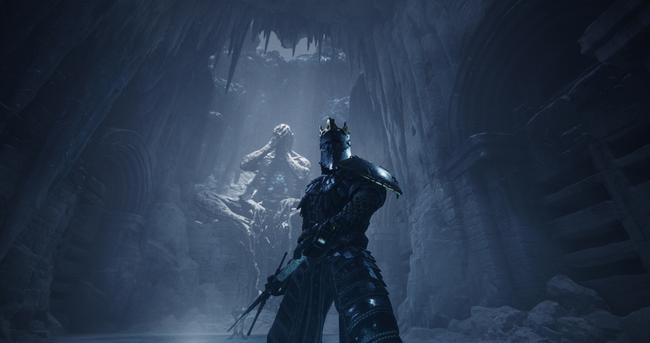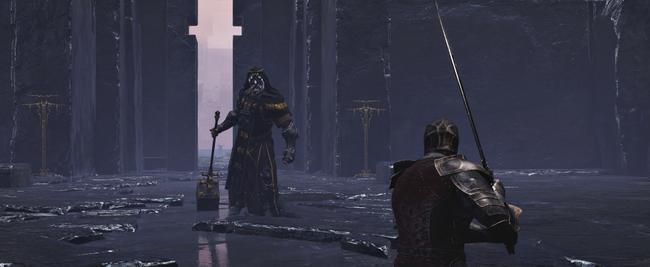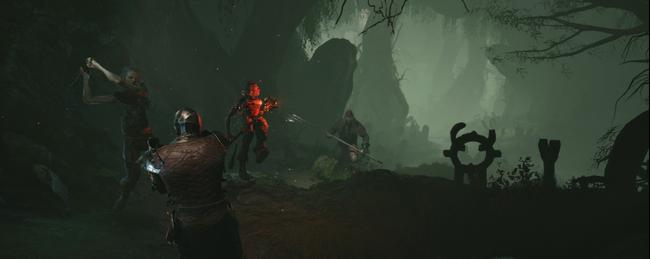
Mortal Shell Review
There have been plenty of attempts to recapture the magic of the Soulsborne games. Some titles take the formula and place it in a different setting whilst others take specific mechanics and try to shake them around a bit. There are a rare few that take what worked in those games and tighten them up, add in some unique mechanics, and come out the other side to be nearly on-par. Mortal Shell is one of those games.
Mortal Shell has you playing as ‘The Foundling’, a creepy white humanoid that can inhabit empty shells of fallen warriors. You’ll explore Fallgrim and as you can probably guess, the plot is mostly delivered through vague utterances from side characters and a general idea of what you’re supposed to be doing. A lot of the plot comes from slowly learning more and more about who your shells used to be through glimpses and upgrades, which I thought was a really cool touch. It took the plot from just being another background element to it actually affecting gameplay and progression.
One thing that Mortal Shell really excels in is its look and atmosphere. This is easily one of the better looking games in the genre, which is especially impressive considering this was done by a team of about 15. Fallgrim looks and sounds fantastic, creating a genuinely creepy and moody atmosphere throughout.

The basic gameplay loop is very similar to the rest of the soulsborne genre as you’d probably expect, but with a few key differences. The first major one is the scope. Mortal Shell isn’t a sweeping RPG. It is instead a much more tightly focused one. You should be able to complete the game in around ten hours, and there aren’t a huge variety of locations and bosses like in other games. To me this is absolutely a good thing and really lets Mortal Shell show up and not outwear its welcome like so many other titles.
As you can probably guess from the title, shells are one of the biggest things that Mortal Shells introduces. Each one is a different warrior that has fallen in battle, and they all have different stats and upgrade trees that differentiate them. There are only four to be found, but they all have enough depth to them that they feel worth seeking out and giving a try. You’ll almost definitely finish the game with a favourite. You’re not forced into trying to balance them all either; you simply need to find one you like and stick with it. It can be a little bit jarring to not be able to directly influence your stats or customisation, but it’s all in service of keeping the game more focused.
I found that beyond making the shells feel a little bit more unique, the upgrades here actually made Mortal Shell feel a lot more manageable. A few of the upgrades feel a little tertiary, but once you put a considerable amount of time into one shell, you’ll feel a lot more capable than before. In fact, I’d go as far as saying that these upgrades actually remove a considerable amount of the challenge from the game. Personally, I loved the slow feeling of getting stronger, but if that worries you you can always play without a shell for the ultimate challenge.

Shells aren’t the only thing you’ll be finding out in the world though. You also come across a variety of different weapons that you’re able to equip from the main hub. Once again, there’s only a small number of these, but they all feel distinct. My advice is to get the Hammer and Chisel as soon as possible, because none of the other weapons really compare by the end of the game. I liked that with both the weapons and the shells, the game will give you a pretty big nudge in the right direction
Another big difference in Mortal Shell is the harden mechanic. This ability allows you to hold a button down and block any damage coming your way. As soon as you’re hit the effect wears off and has to recharge for a few seconds. Enemies are capable enough that this doesn’t feel like a ‘win’ button, and simply allows for you to correct mistakes and stay in the fight. I did find myself relying on it a little too often, but it becomes necessary when you consider your healing options.
Mortal Shell would have you believe the shells and hardening are its most unique features, but for me the focusing on parrying to heal was the most interesting. There is no equivalent to the Estus Flask in the game, so you mostly rely on limited consumables like mushrooms and cooked rats to heal. These items don’t act instantly either, instead slowly filling your health back up over time. Instead, your main source of healing is to parry enemy attacks and use a separate meter to do a healing riposte. These parry windows are pretty small, which makes it incredibly rewarding to pull off. I loved the focus on this, but in some of the game’s harder moments I couldn’t help but think that it would have been nice to have at least one more reliable way of healing.

Initially I found it very difficult to get the souls-bourne influence out of my playstyle, as I found myself trying to dodge and attack rather than using the harden and parry. As soon as you learn to use those two mechanics, the game goes from being somewhat aggravating to purely satisfying and you soon feel a lot more powerful than the enemies you’re taking on. Even still, those initial few hours are going to be a bit rough, and it can take a little bit of time to really gel with the mechanics at play here.
Boss battles are another high point of Mortal Shell. One small problem I had with combat was that taking on more than one enemy at a time often felt a little clumsy, so focusing on one much bigger foe was a lot more concentrated and fun. Besides Hadern none of them particularly stand out too much, but they’re all a good challenge and a lot of fun to take on.
Mortal Shell doesn’t just replicate what other games in the genre have done before. Instead, it takes that formula, sharpens it and adds enough to make it a completely different feeling, but equally satisfying blade. Fallgrim is a world I’d be happy to struggle through again.